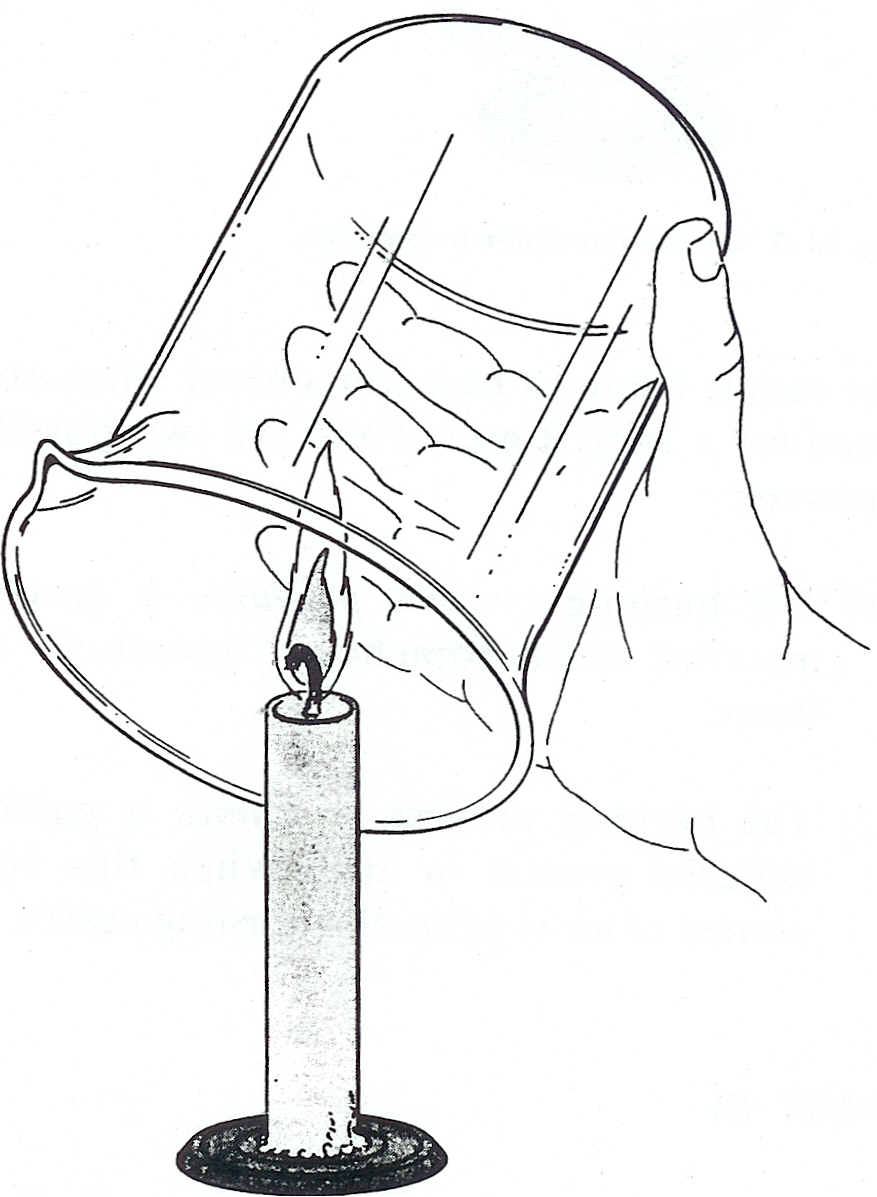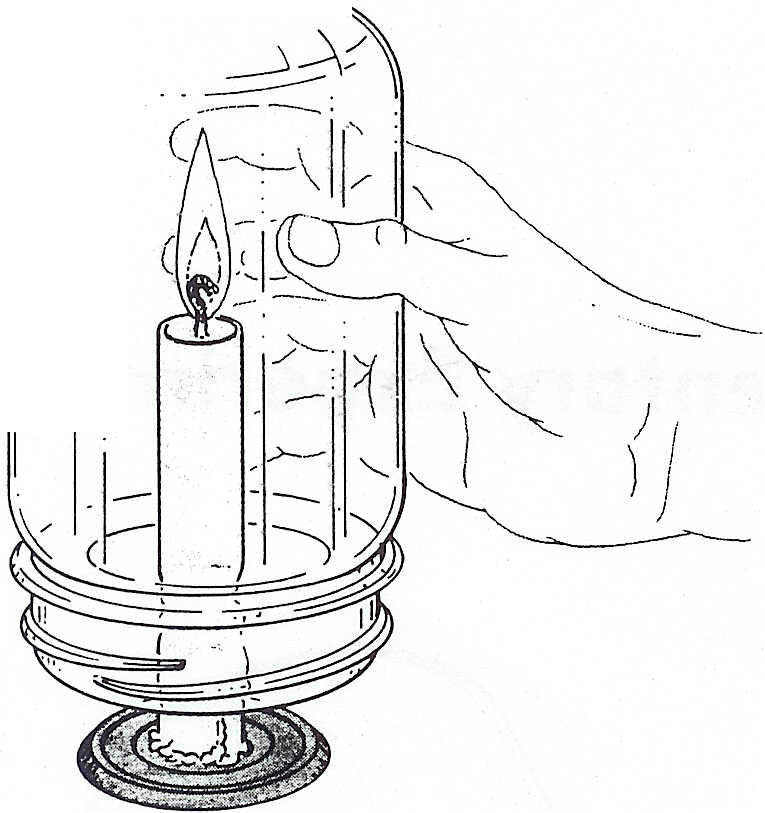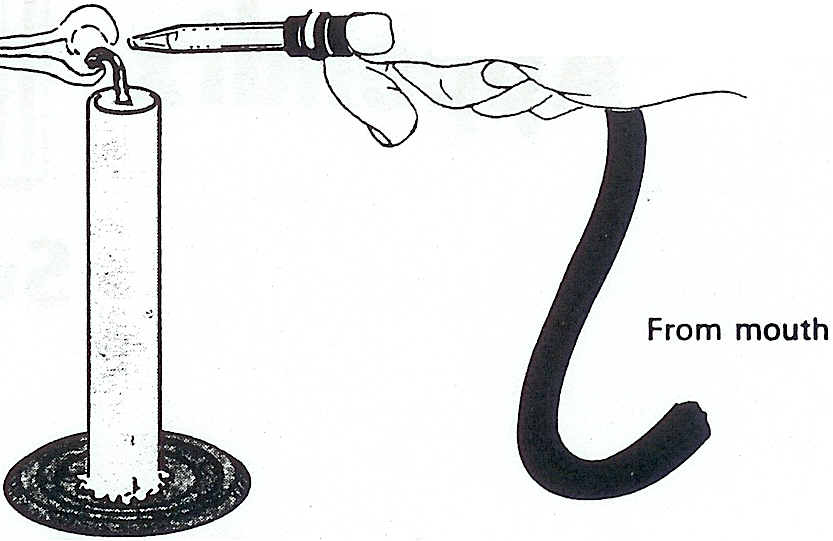Appendix 
Supplementary Experiments
E X PER I MEN
T 
Combustion
of a Candle
In your
description of a candle, some of your recorded observations probably were"...
the candle decreases in length as it burns... the candle material is consumed..
.." What is happening to the candle and what is causing it to happen? These are
questions with a ready answer. We all know the candle is burning. But what does
this word burning really mean? Let us try some experiments to find out.
PROCEDURE
PART
I
a. Invert a
large jar over a burning candle and leave it there until the candle is
extinguished. (Figure S1-1.) Test the thin liquid film on the inside of the
beaker with a strip of cobalt chloride test paper. Record your observation.
b. Moisten a second piece of cobalt chloride test paper with a drop of tap
water. Suggest one possible product of the combustion reaction.


Fig. S1-1 Testing for
a product of combustion.
Fig.S1-2 Combustion inside a
container.
PART
II
a. Determine
the length of time (seconds) a candle continues to burn when the jar is placed
over it as shown in Figure SI-2.
b. Relight the candle and repeat Part II, step 3, but use a jar with only half
the volume.
As often happens in science, the attempt to answer one question raises others.
What causes the candle flame to be extinguished when con- fined for a short
time? Here are two possible answers:
(I) The burning process produces a gaseous material which somehow
"quenches" the flame.
(2) The burning process consumes a gaseous material present in air. When
this component of air is gone, the burning ceases.
PART
III
a. Using a
straw, add air to a candle flame to produce a jet. (See Figure S1-3.)
b. Get two clean 250-ml Erlenmeyer flasks. Add about 25ml of limewater to one of
the flasks to take back to your table. Place the empty 250-ml Erlenmeyer flask over a burning candle as in Part II, step a.
After the candle flame is extinguished, quickly place the flask upright on the
table.
Add about half of the 25 ml of limewater solution to the flasks that was just
over the candle. Swirl the solution
in each flask simultaneously until a change occurs in one of the flasks.
c. Using a glass tube or a straw, blow your breath into the second control flask
containing some limewater solution.

Fig. S1-3 Blowing air
into the flame.
Some
Questions and Regularities for Part I
1. What conclusions can be drawn from this experiment?
2. Does the evidence you have gathered eliminate the possibility that something
other than water caused the observed changes? Explain your answer.
3. If the liquid film is water, where does it come from?
4. Would you expect water to be produced if an electric heater were used in
place of the candle under the beaker? Explain your answer.
Some Questions and Regularities for Part II
I. How does the time required to extinguish the candle flame using the quart jar
or liter beaker compare to the time using the pint jar or 500-ml beaker?
Some Questions and Regularities for Part III
1. Explain how these experiments offer a basis for preference between the two
answers postulated in Part II for the following question: what causes the candle
flame to be extinguished when confined for a short time?
2. Name some possible products of combustion for candle material as indicated by
these experiments.


